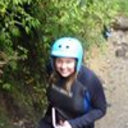Evaluation and Adaptation of Attractive Toxic Sugar Baits For Culex tarsalis and Culex quinquefasciatus Control In The Coachella Valley, Southern California.
Kulcsszavak
Absztrakt
The project goal was to determine how a new vector control strategy that targets the sugar-feeding behavior of mosquitoes, attractive toxic sugar baits (ATSBs), can be used to more effectively control West Nile virus (WNV) vectors in the Coachella Valley, California. Three laboratory studies were conducted to determine the utility of this method for control against Culex quinquefasciatus and Culex tarsalis : 1) efficacy evaluations of 2 formulations of ATSB, microencapsulated garlic oil, and a combination of microencapsulated garlic oil and 1% boric acid; 2) choice assays to determine the attractiveness of ATSB with the microencapsulated garlic oil against attractive sugar baits (ASB; the attractant alone; without toxin) and a 10% sucrose solution; and 3) vegetation efficacy tests on 3 common plant species in the Coachella Valley, Atriplex lentiformis, Tamarix ramosissima , and Pluchea sericea. At 48 h the average mortality for Cx. quinquefasciatus was 91% after exposure to ATSB with microencapsulated garlic oil and 99% on ATSB garlic + 1% boric acid solution. Culex tarsalis averaged 86% and 91% mortality following the ATSB microencapsulated garlic oil solution and the ATSB garlic + 1% boric acid solution, respectively. Choice assays indicated that the there were differences in preferences between the solutions and between species. Both Cx. quinquefasciatus and Cx. tarsalis were found to prefer the ASB and ATSB solutions to the 10% sucrose solution. However, when comparing the ASB to ATSB, Cx. quinquefasciatus significantly preferred the ASB solution (t = 3.6, df = 25, P = 0.0008). There were no significant differences in the preference of Cx. tarsalis to feed on the ASB or ATSB solutions as indicated in the choice assays (t = 1.9, df = 25, P = 0.07). Assays indicated that applications of ATSB to the 3 common plants in the Coachella Valley resulted in high mortality in both Cx. quinquefasciatus and Cx. tarsalis. There were significant differences in the treatments compared to the control (F = 40.15, df1,2 = 4,72, P < 0.001) but no significant differences among the different plants and ATSB treatments (F = 1.06, df1,2 = 4,72, P = 0.38). Laboratory findings suggest that ATSB is effective for use against WNV vectors in California. Further evaluations are needed in the field to determine how the environment may impact ATSB applications to influence mosquito mortality and nontarget organisms in arid environments in the United States.




